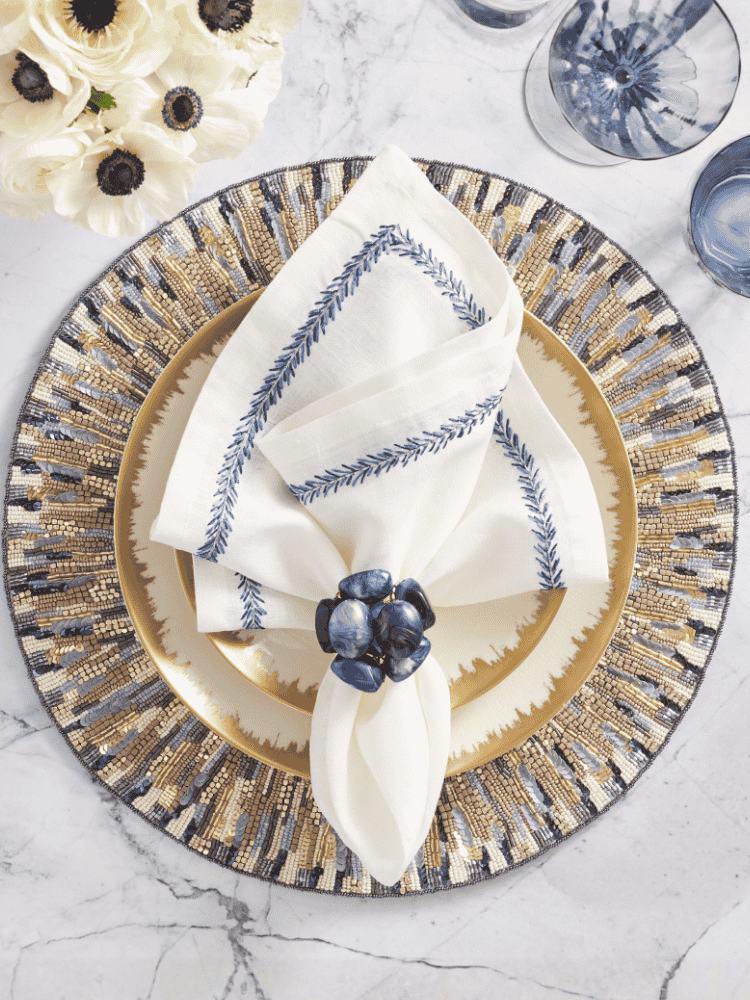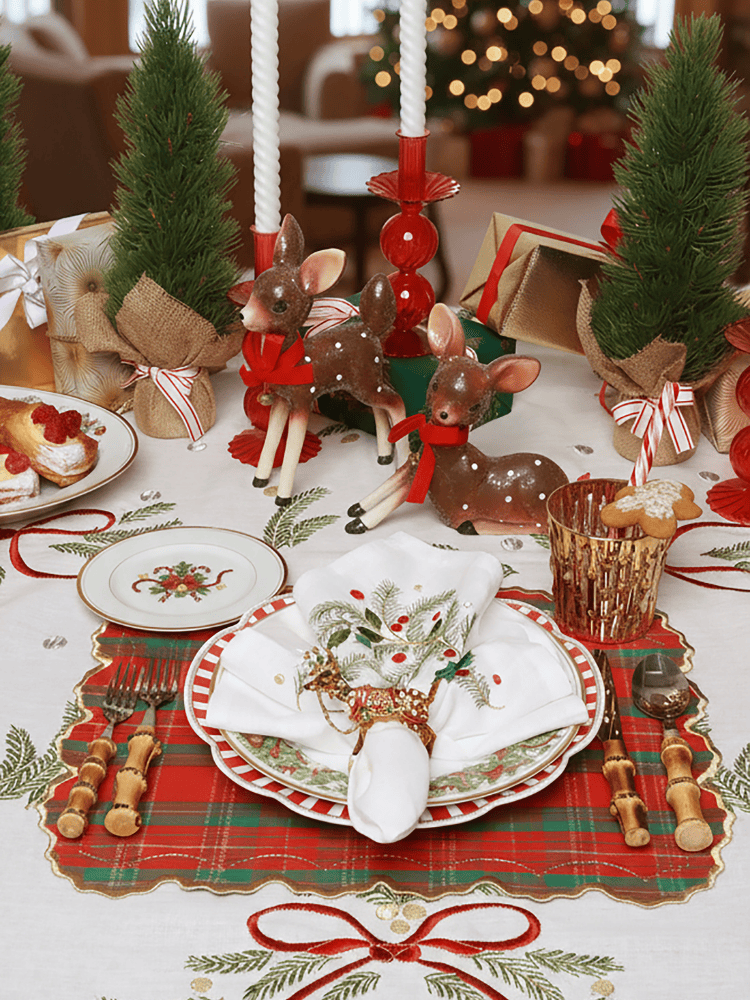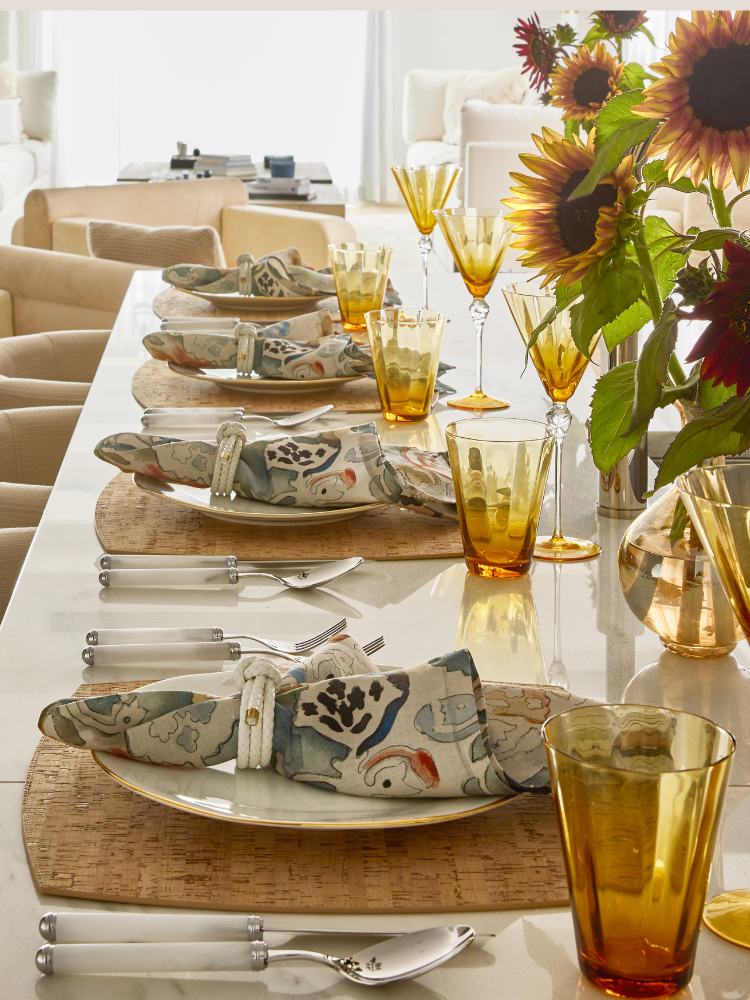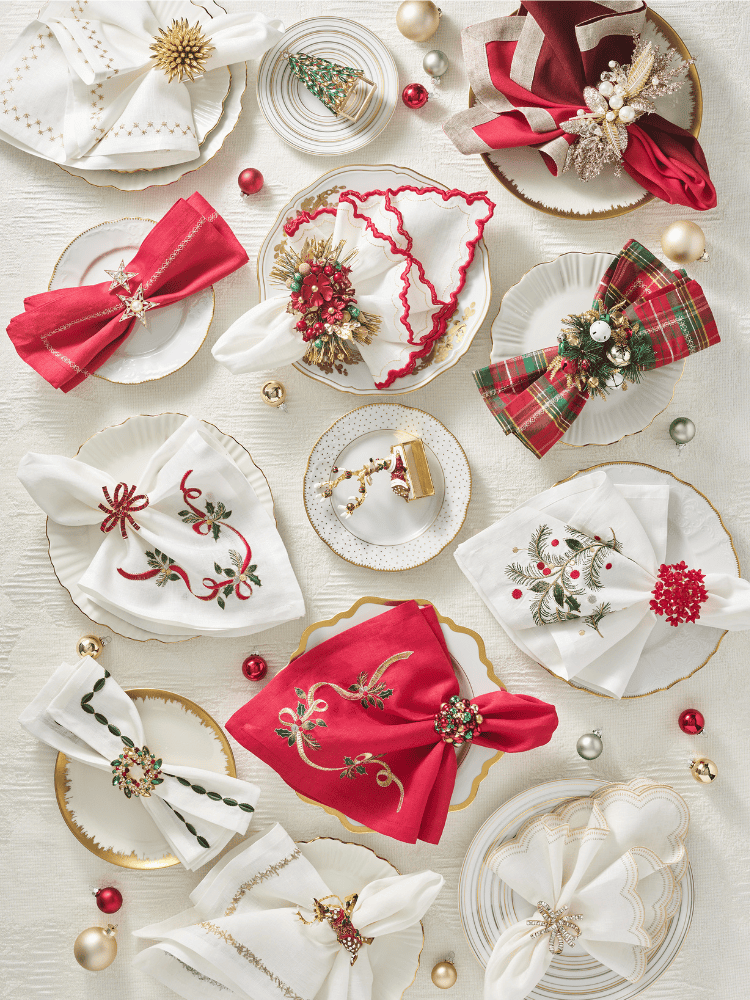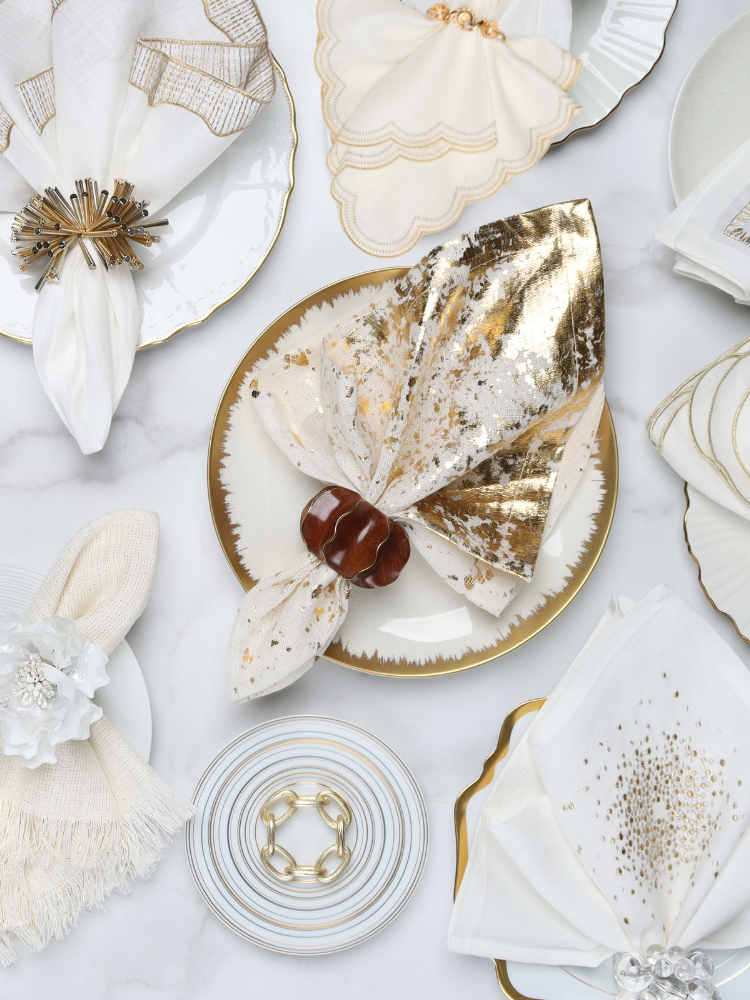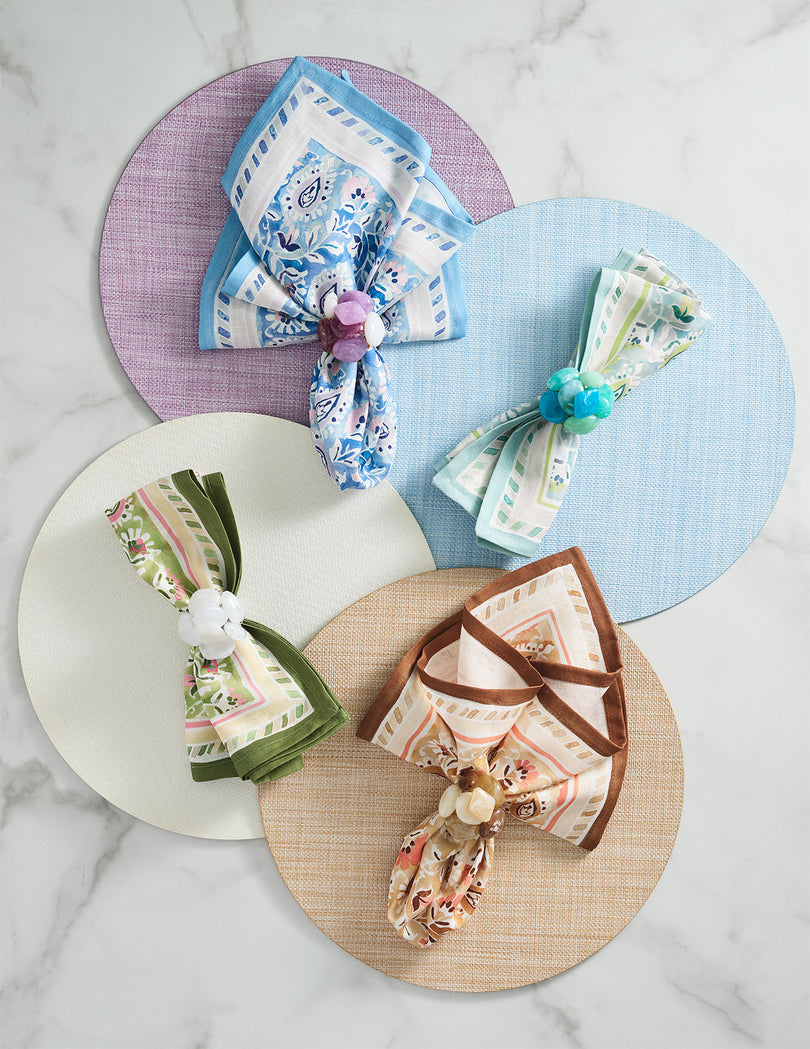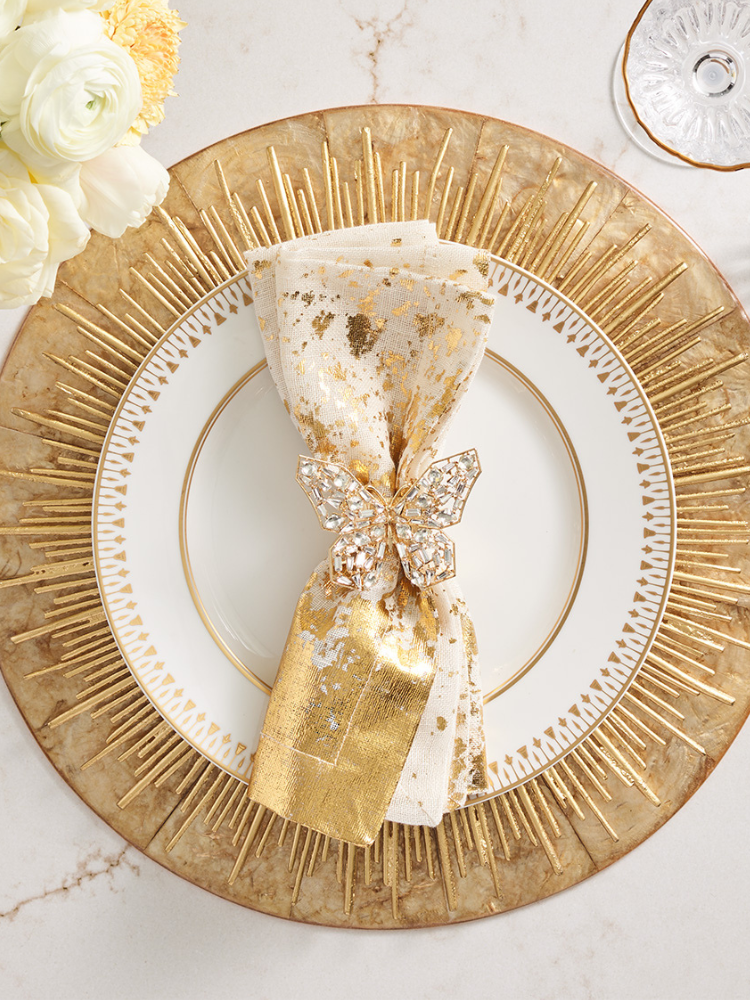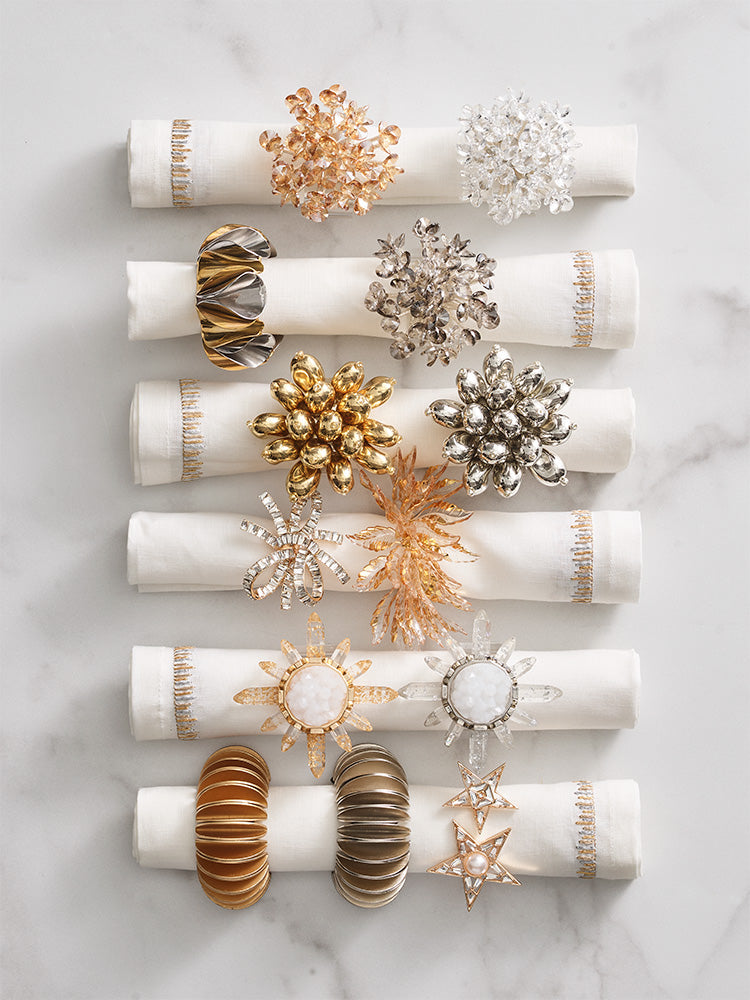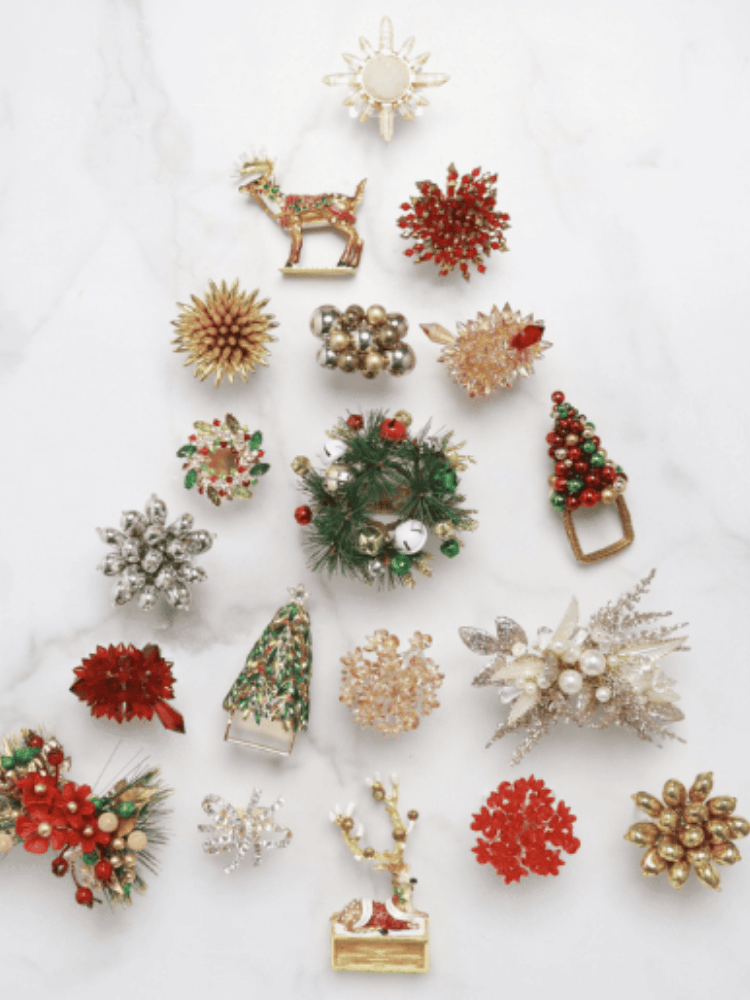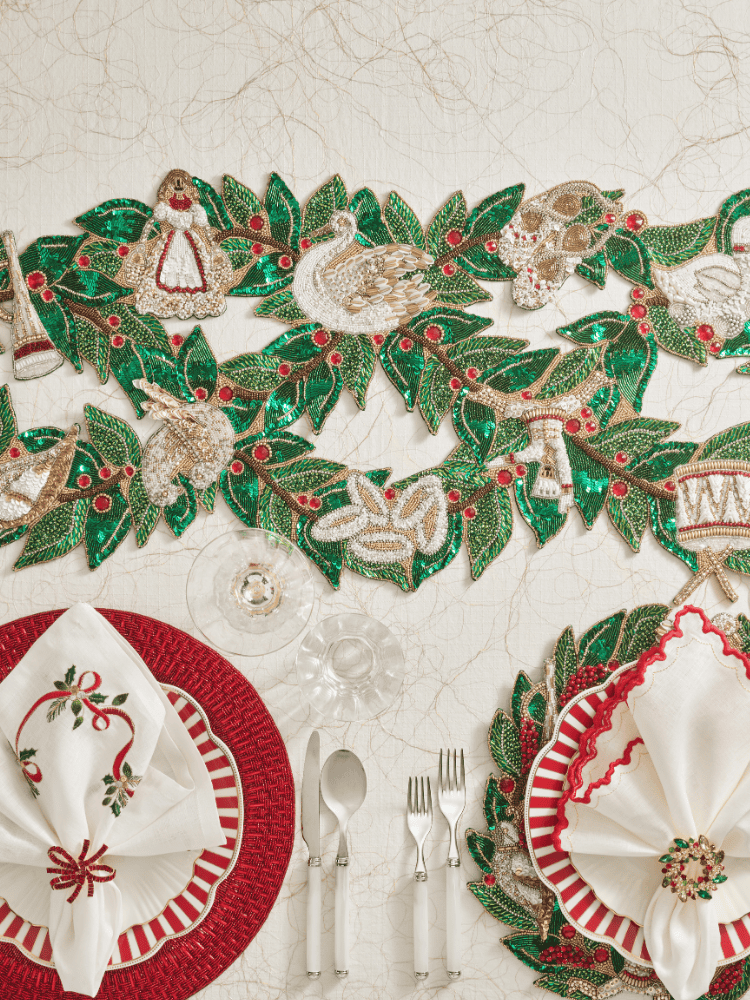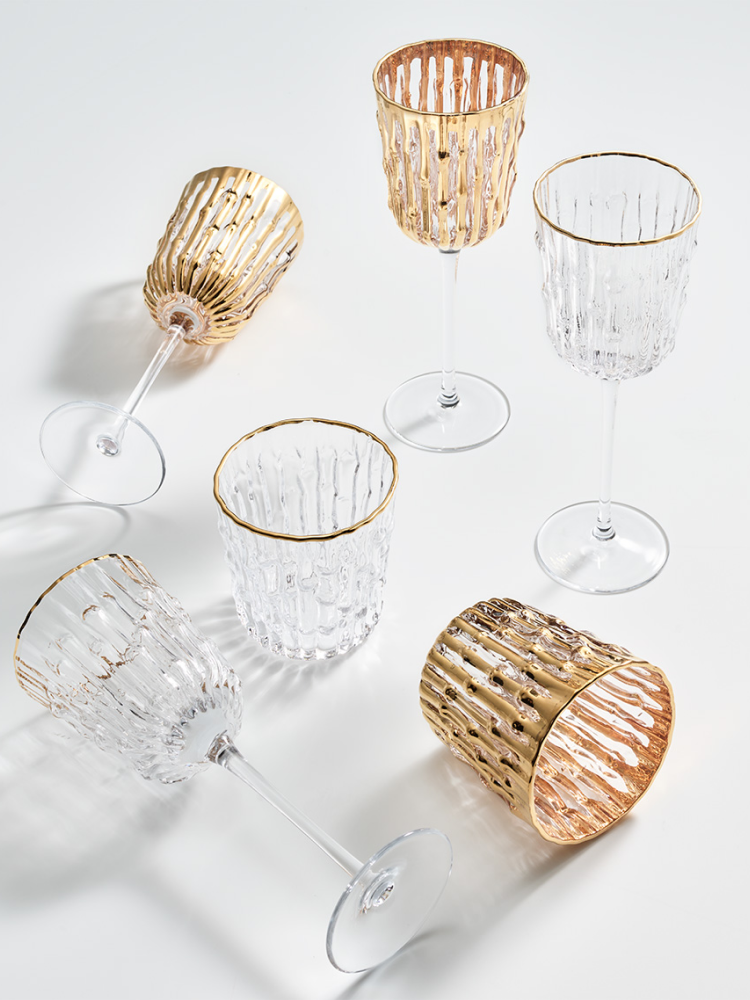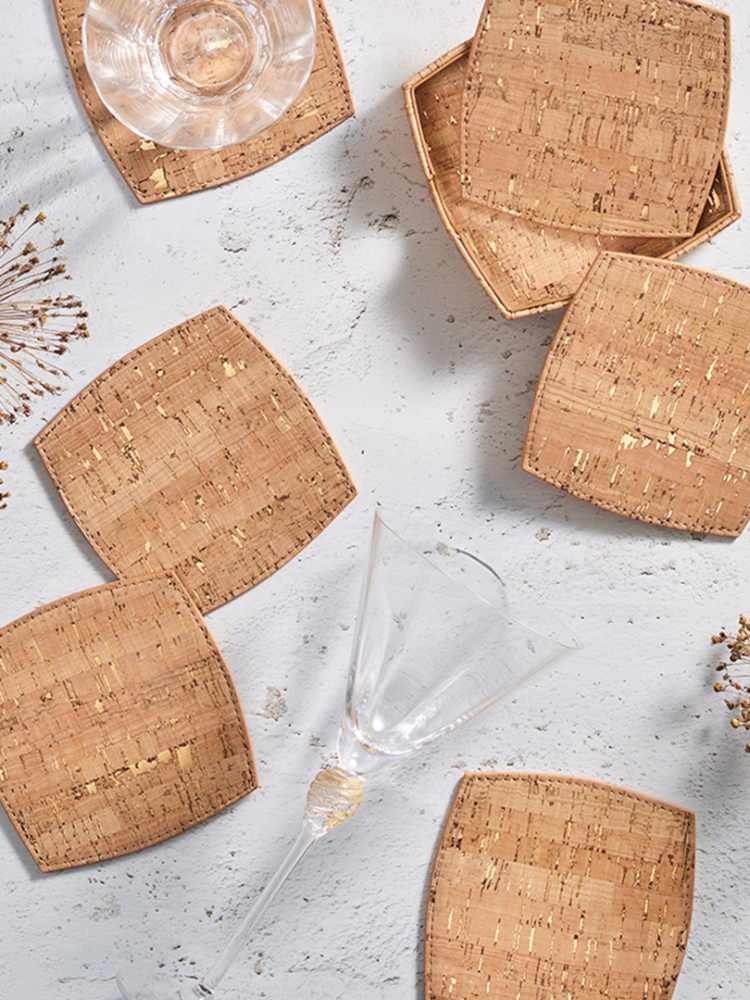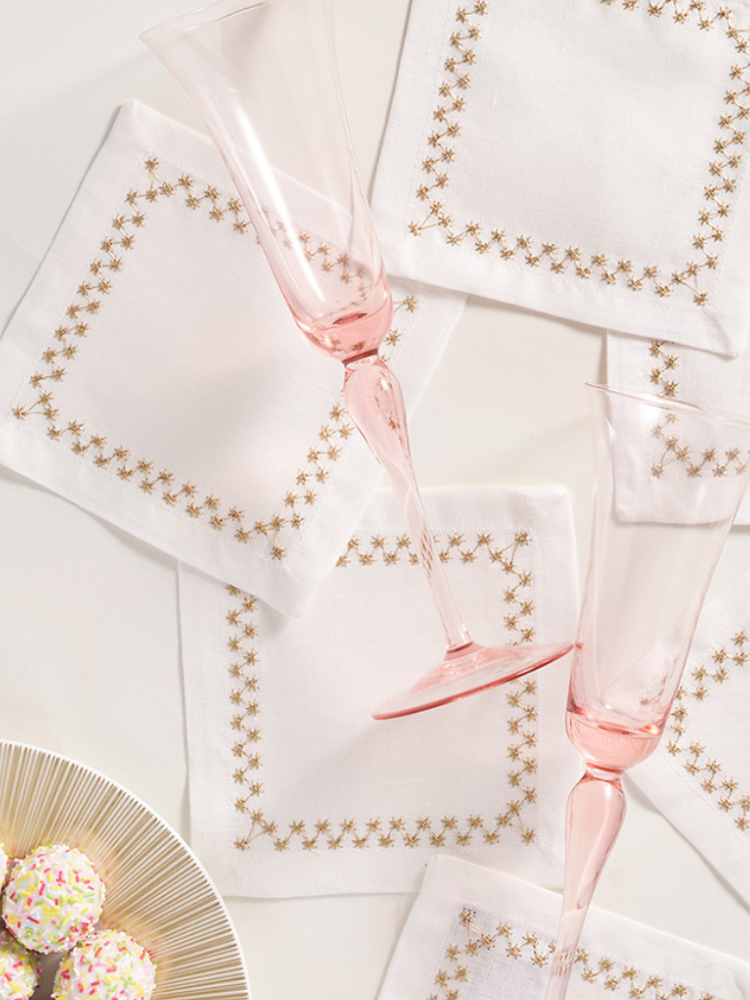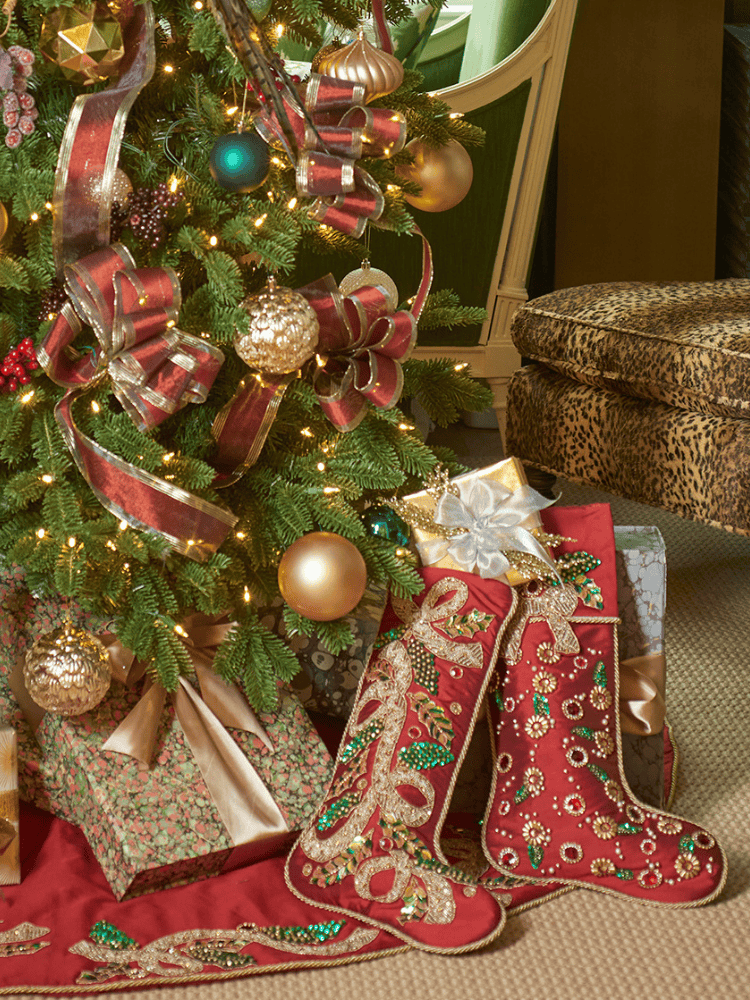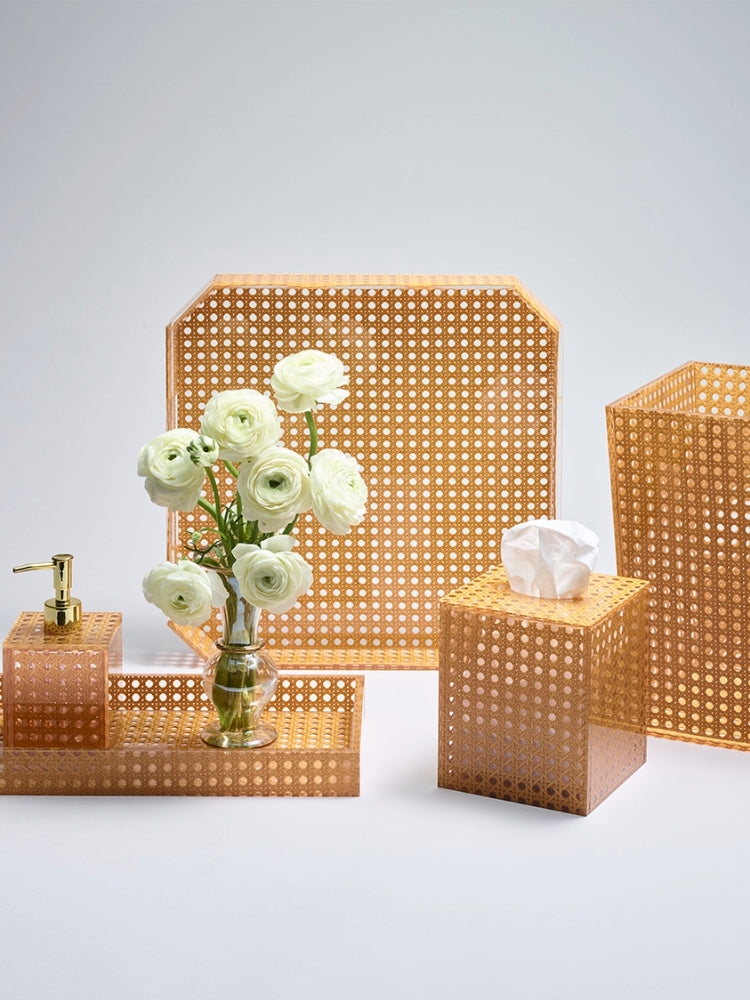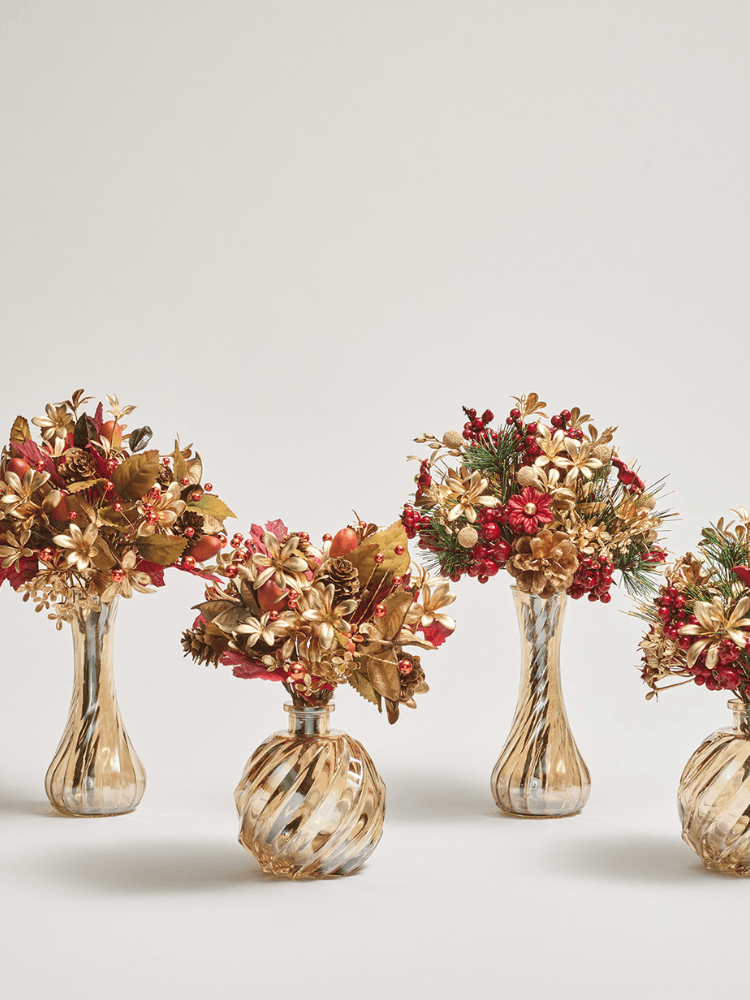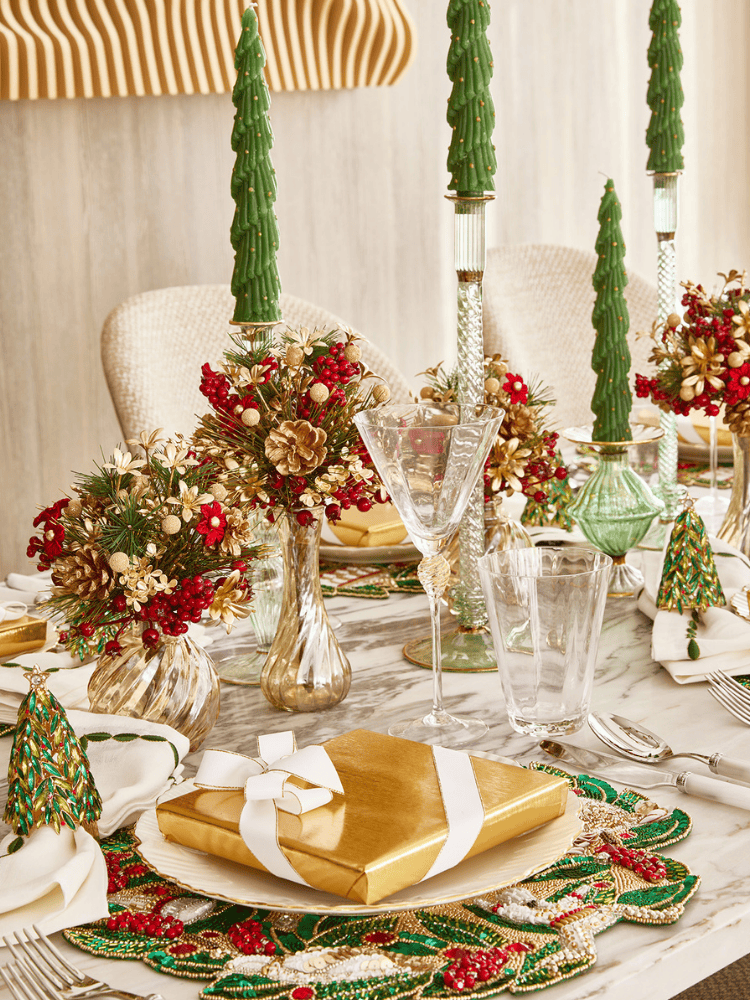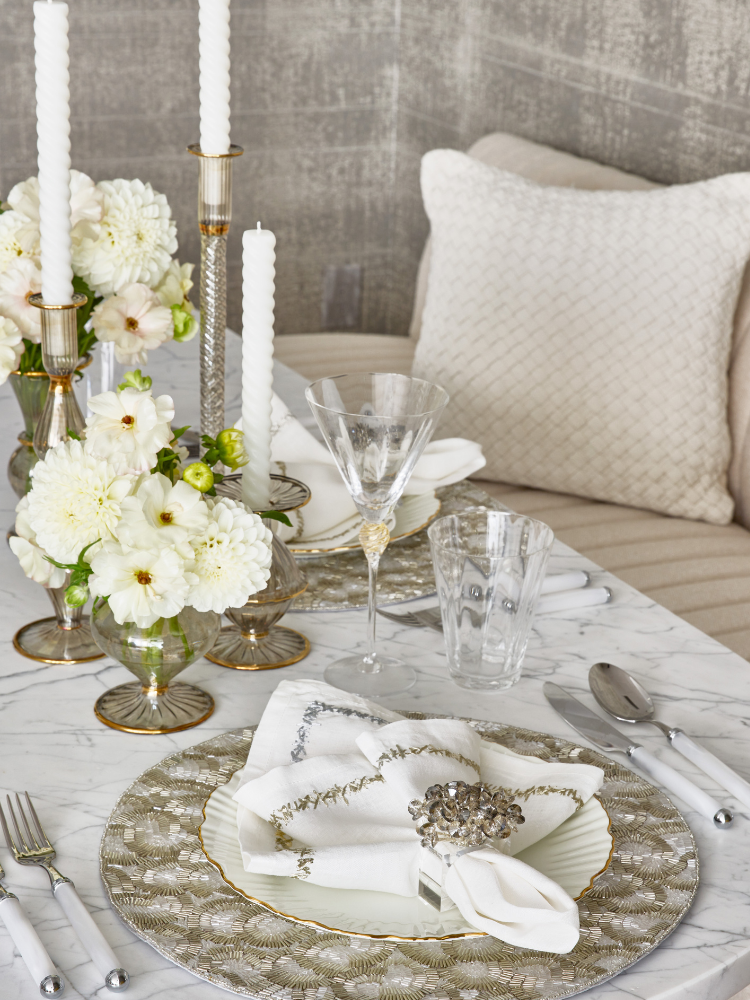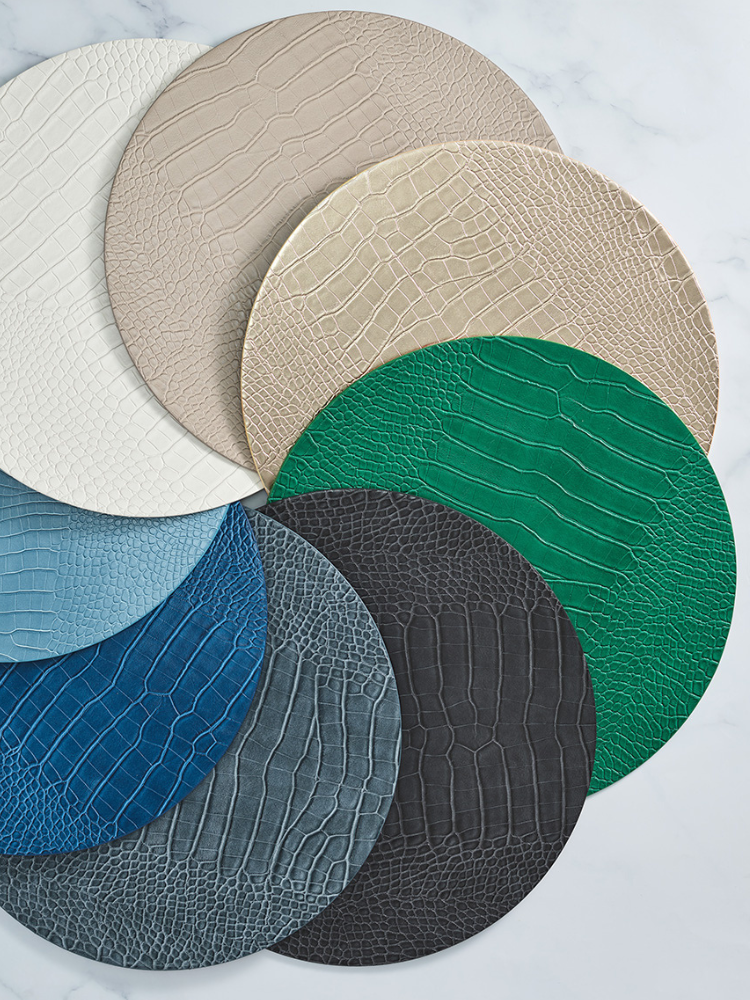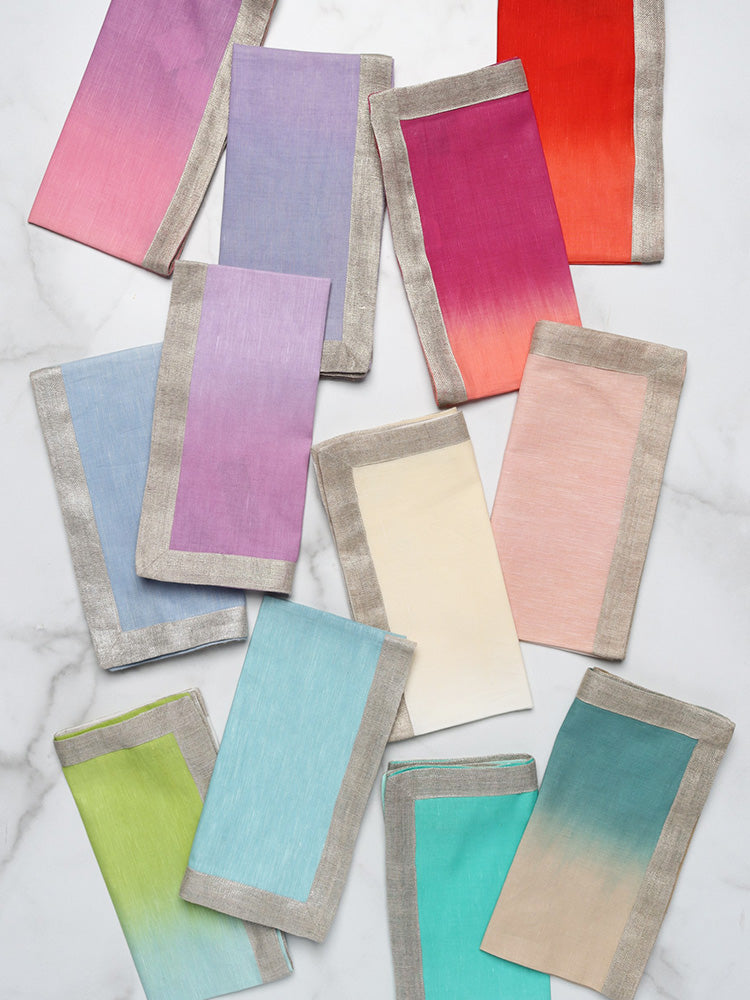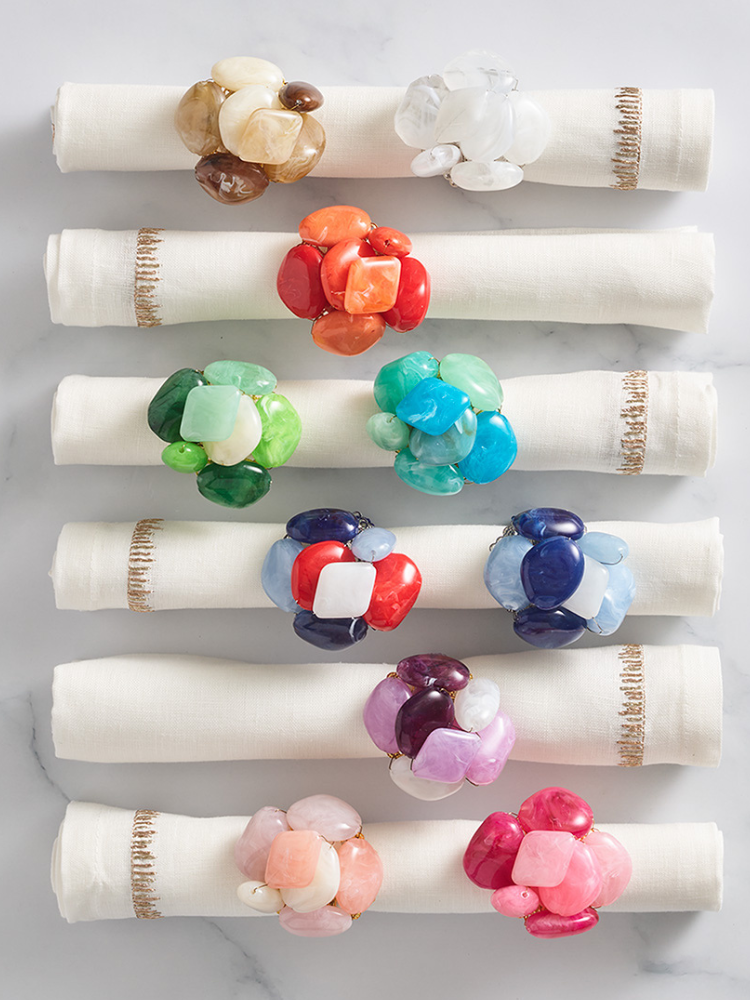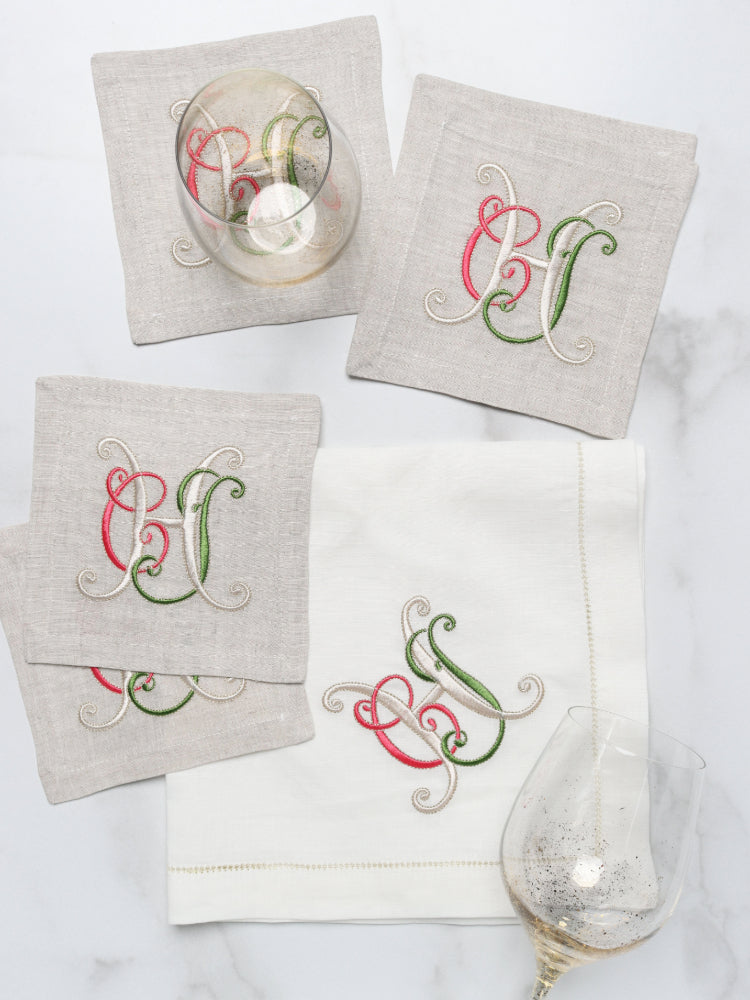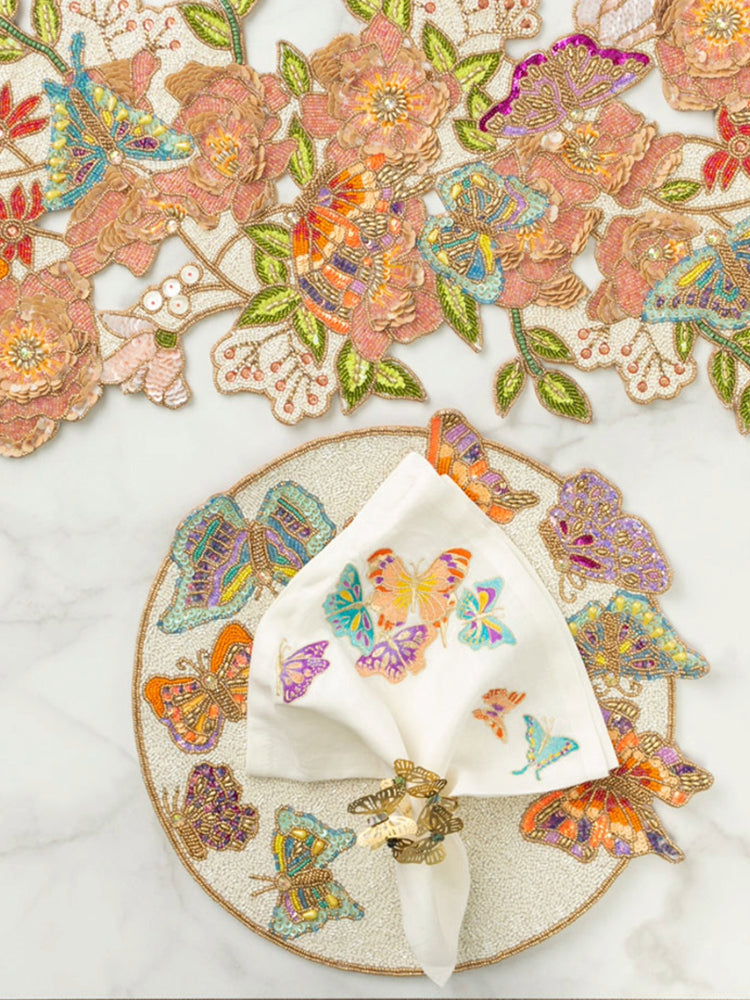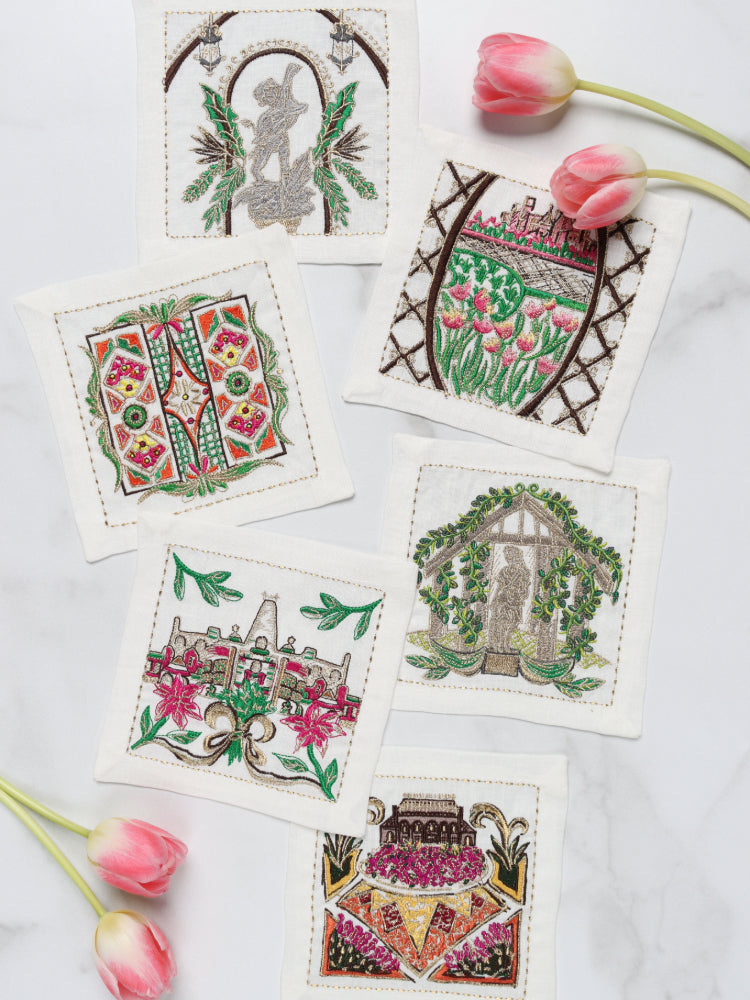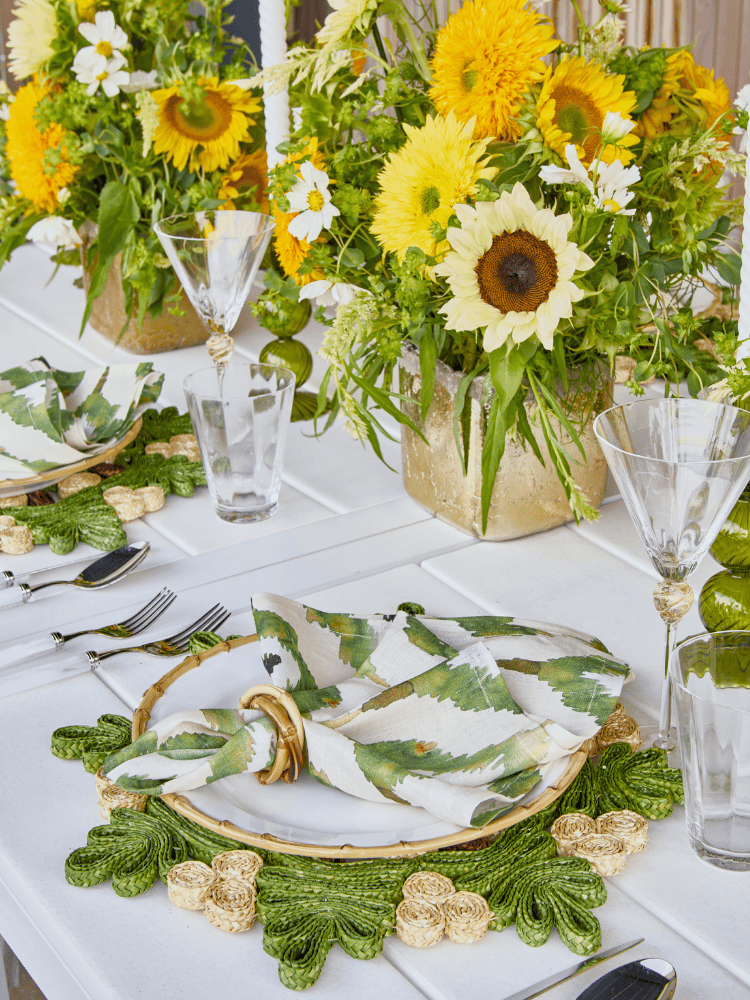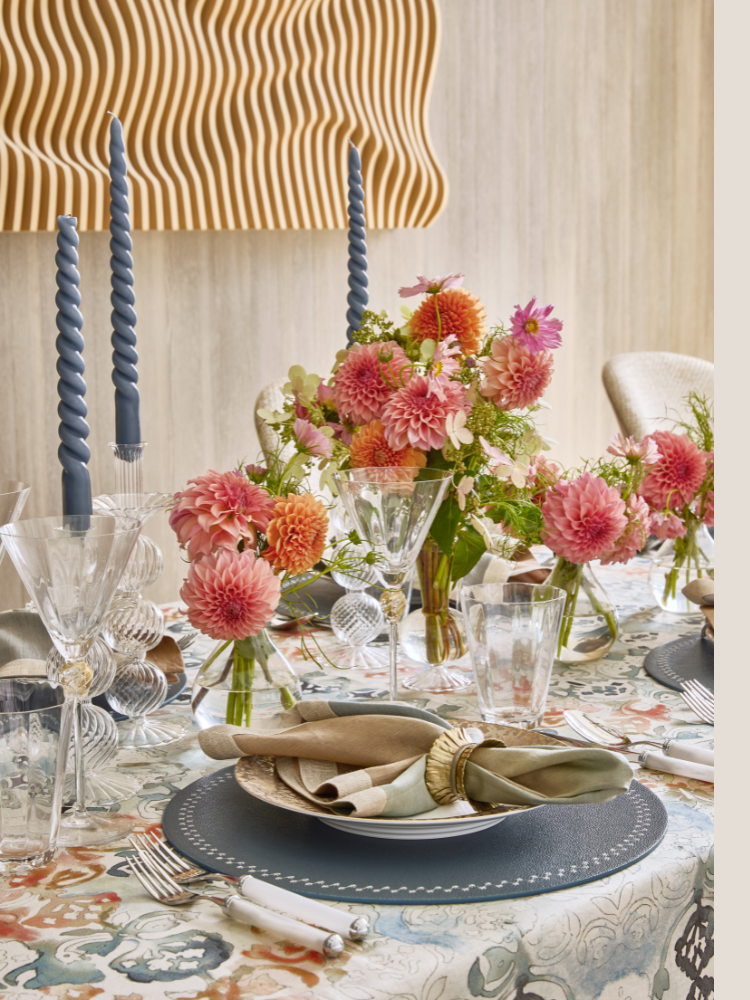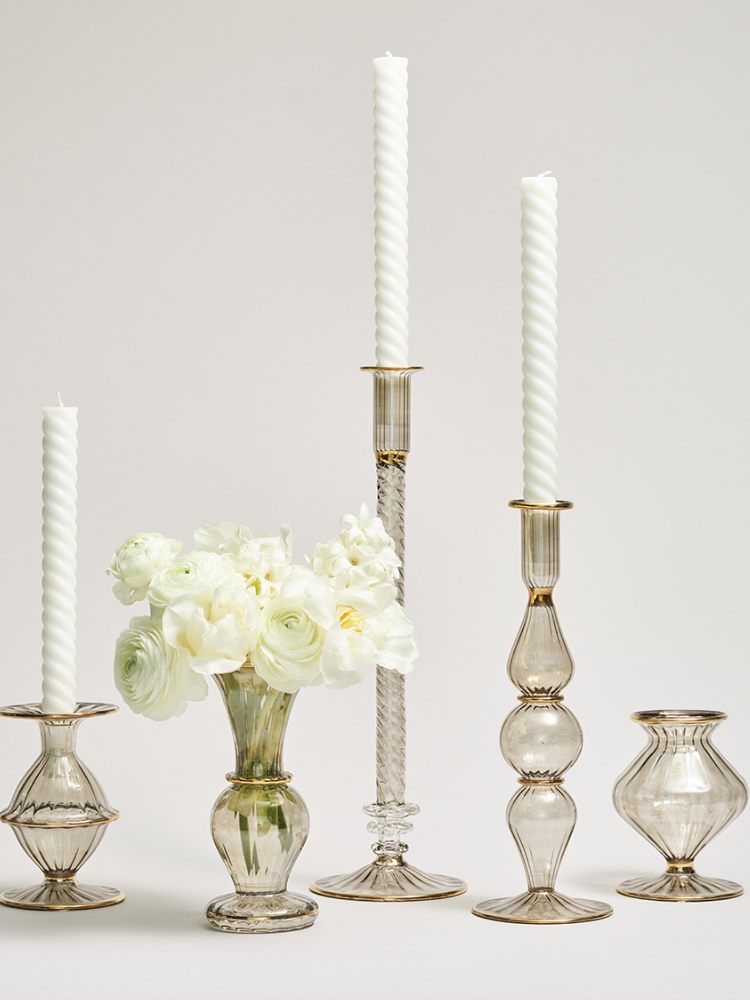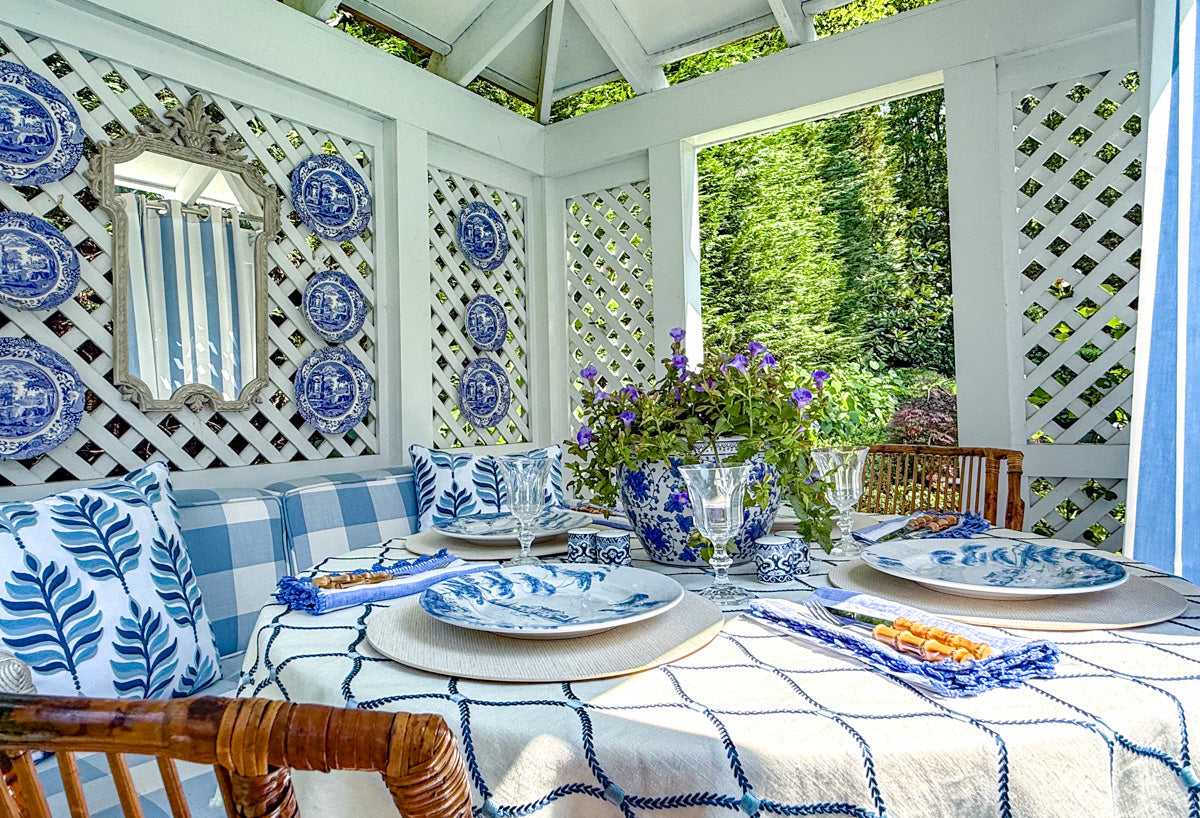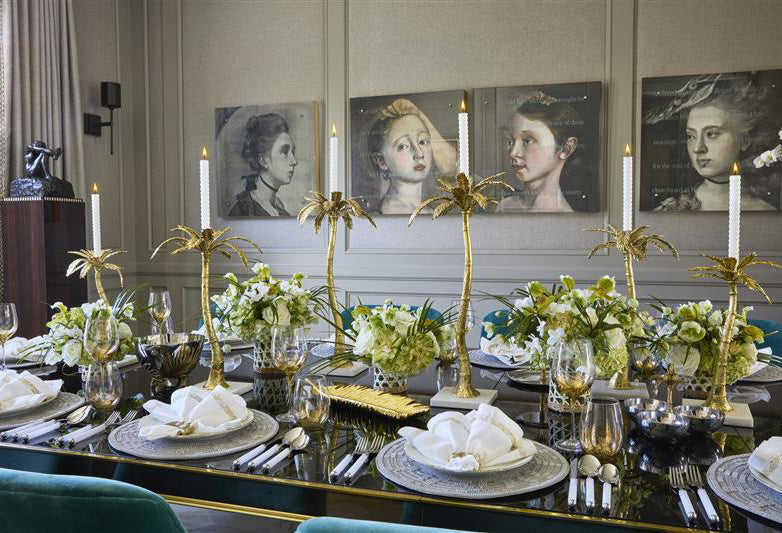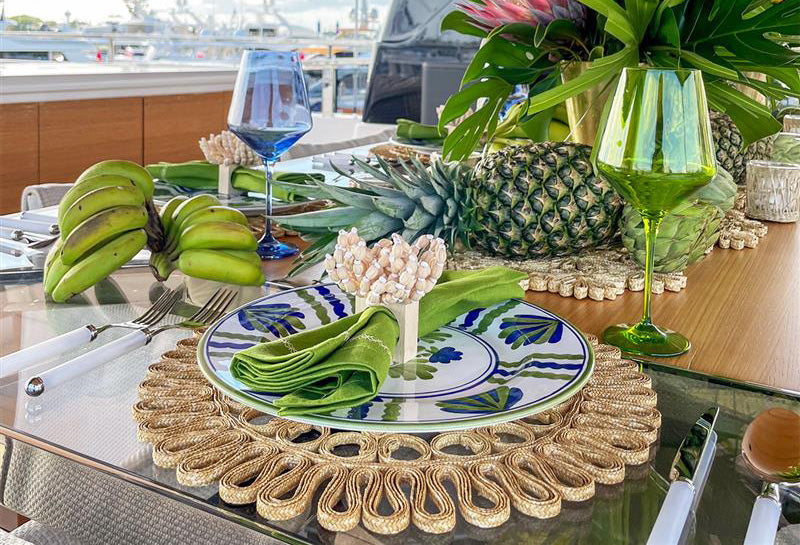What Is Chinoiserie? A Style Guide to Porcelain, Patterns, and Table Decor

Chinoiserie is a European decorative style inspired by Chinese, Japanese, and more East Asian art forms. Beyond the textbook definition, it feels straight out of a designer's sketchbook with signature blue-and-white decor, elegant porcelain, gleaming lacquer, and ornamental landscapes.
So what does chinoiserie mean? In this guide, tableware expert Kim Seybert shares a modern designer's perspective on how chinoiserie decor translates into interior design, tablescapes, and the art of entertaining.
Style Snapshot For Classic & Modern Chinoiserie
- Anchor tables with blue-and-white decor like porcelain dinnerware sets, luxury vases, and ginger jars.
- Layer embroidered napkins, elegant placemats, and bamboo textures for modern contrast.
- Incorporate seasonal color stories such as navy and gold for winter, citrus in summer, and rusts in fall.
- Carefully select a curated collection of chinoiserie motifs and pair them with high-end glassware or contemporary flatware.
History of Chinoiserie: From Palaces to Parlors

The word "chinoiserie" derives from the French "chinois" ("Chinese") to describe Asian-inspired designs that became fashionable in Europe. While the phrase was coined at the height of its popularity in the 18th century, the movement started to flourish in the 17th century as world trade expanded.
Each European country interpreted the chinoiserie style to reflect the wealth and refinement of imports such as porcelain, lacquerware, and silk. At Versailles, chinoiserie appeared in gilded Rococo panels. In England, it shaped Chippendale's fretwork furniture and the Kew Gardens Pagoda. The Dutch created Delftware as a local answer to sought-after porcelain, while Germany's Meissen dinnerware developed its own hard-paste version.
What united the variations was a shared curiosity. Chinoiserie was not a direct reflection of East Asian artistic traditions but rather a Westernized impression. At times, it was imaginative, but also inaccurate. Today, its most beautiful decorative references are still applied and reinterpreted in interior design.
Chinoiserie style endures due to its creativity and centuries of Asian craftsmanship informing its aesthetic. More than three hundred years later, timeless chinoiserie decor still surfaces in Zuber wallpapers, de Gournay panels, Meissen porcelain, and luxury brands.
Signature Elements of Chinoiserie Style

One reason it's easy to identify many iconic Chinoiserie decor elements is that they carry centuries of symbolic meaning, in addition to time-honored artistic techniques.
Chinoiserie Motifs
- Pagodas: Borrowing from temple architecture across Asia, these tiered roof silhouettes often appeared painted onto ceramics or echoed in lanterns. For example, the Pagoda Napkins bring a poised presence with elegant embroidery across linen.
- Guardian lions (shishi): Stone lions represented protection as guardians of temples in China. In Europe, they became known by the misnomer "foo dogs," many decorating mantels and tabletops.
- Dragons: A significant symbol of power, strength, and good fortune in Chinese culture. European artists painted stylized versions among waves and clouds. The Imperial Dragon Napkin's metallic embroidery channels the dragon's strength into a bold accent for the table.
- Florals and birds: As spaces for meditation or connecting with nature in many Asian countries, chinoiserie gardens are more than decorative. Cherry blossoms often stand for renewal, and phoenixes for rebirth. Peonies can symbolize romance and wealth. Another notable decorative flower is the orchid, which you can pair with Kim Seybert's Orchid Collection.
Materials and Craftsmanship
- Porcelain: Perfected over centuries in China and later referred to as "white gold" by Europe, Meissen notably developed its own formula to produce reproductions of luxury dinnerware and vases.
- Lacquer: From Japan to China, lacquer brings a depth and luster that Europe could never replicate, despite attempts with glossy painted finishes. For an easy-care version of the luxurious look, the Reed Collection seeks to pay homage to the subtle sheen.
-
Faux-bamboo: A symbol of resilience, bamboo has been carved, painted, and endlessly imitated in European decor. The Bamboo Trinity Napkin Ring, paired with the Bamboo Placemat, utilizes natural bamboo and meticulous craftsmanship to capture its organic elegance.
-
Silk: Often featuring chinoiserie landscapes on painted wallpaper and embroidered chairs, silk defined luxury interiors. Make the same striking impression with ombre dip-dye napkins or embroidered cloth napkins.
Chic Chinoiserie Blue-and-White Tablescapes

If you have to pick a classic color for chinoiserie style, it would be blue-and-white decor. It's crisp, classic, and endlessly adaptable. Here's how to get the look:
- Dinnerware and Chargers: A signature of the Chinese Yuan dynasty, cobalt-and-white became a celebrated color for porcelain utilized by Sèvres and other luxury brands. Start with one of these classic porcelain plates that captures today's dinnerware trends.
- Table Linens: Blue and white porcelain blends beautifully with a linen tablecloth and beaded placemat. Layer in more blue and white colors with the, Bevel Placemat, Palisade coasters or the Lune Collection.
- Dining Accessories: Decorative accents can also echo porcelain motifs, such as the Ming Napkin or the Cloud Napkin Ring.
- Elevated Centerpieces: For a chinoiserie centerpiece, use a ginger jar or a large glass vase with peonies to transform your setting. Add a few glass candle holders to create a balanced focal point in coordinating colors.
- Seasonal Florals Styling: Evolves with the seasons. Think cherry blossoms in blue vases on lacquer trays for spring, citrus and coastal linens for summer, rust florals and gold accents in autumn, and winter greenery in ginger jars with festive candlesticks.
Chinoiserie Decor for Modern Homes & Entertaining

Chinoiserie looks beautiful both indoors and outdoors, as it seamlessly weaves natural elements into various decorative motifs. Across Europe, aristocrats also built gardens featuring pagodas, bridges, and tea pavilions in chinoiserie style.
Now, the key is creating an organic balance. A lacquered tray with colorful stemware or a single porcelain vase on a console has as much impact as a room full of hand-painted wallpaper.
Do's and Don'ts for Styling Chinoiserie:
- Do let one statement lead: Remember, a table runner or porcelain vase can speak volumes, complemented by subtle chinoiserie-style accents.
- Do balance the ornate with the understated: The addition of minimalist furniture or modern glassware lets the chinoiserie decor not feel too dramatic.
- Don't forget the history: Some background research ensures respectful attribution, recognition, and opportunities for storytelling around the chinoiserie decor and the cultural significance.
-
Don't keep the style in a silo: Chinoiserie can work beautifully alongside other moods, such as the calm restraint of Japandi minimalism, the breezy ease of coastal Hamptons style, or the layered look of maximalist dining.
Pro tip: For an effortlessly modern style, try Kim Seybert's Bamboo glassware paired with the Spoke Placemat and matching napkin ring with bamboo textures. Another new classic is the Zen Collection, which offers a chic counterpoint, complete with contemporary neutral tones and luxurious details.
Collecting Chinoiserie: Antiques to Modern Treasures

Chinoiserie decor has been collected for centuries. In 2025, these designs can be more approachable than ever before, and bridge the line between art object and home accent.
Even if it's a good place to start, collecting can go well beyond dinnerware sets. In addition to porcelain vases and chargers, consider more miniature collectibles such as lacquered boxes.
Many treasures resurface at estate sales and auctions, including those held at Sotheby's and Christie's. You can also find later reproductions and new interpretations at consignment shops, and even online marketplaces like Etsy and eBay.
The beauty lies in the mix. A single antique vase paired with new linens creates a lived-in and personal collection.
For any collector, provenance matters. Beyond the authenticity, it is a way of honoring the heritage workshops and craft traditions behind each piece.
How Chinoiserie Style Is Reimagined Today

Chinoiserie evolves with each generation from Wedgwood porcelain to contemporary concepts in de Gournay, Gracie Studio, Fornasetti, and House of Hackney. More luxury houses are also collaborating directly with Asian artisans and crediting specific artistic traditions to honor the authentic crafts that informed their practices.
A new design wave is reimagining traditional chinoiserie and East Asian craftsmanship for modern styles. For instance, Hermès collaborator Shang Xia revives classic Chinese craftsmanship through sleek furniture and porcelain. Lala Curio also injects wit and vibrancy into hand-painted wallpapers and cloisonné tiles.
You can spot its influence with cobalt blue vases in coastal settings, lacquered trays at alpine chalets, and lanterns within cosmopolitan dining rooms. It pairs effortlessly with various tablescape trends, whether you lean towards minimalist maximalism, retro vintage revival, or yacht decor.
Whether it's porcelain in historic parlors or mixing and matching 2025's best dinnerware sets, it is a living design language that continues to offer tablescapes for everyday dining and special occasions.
FAQ: Chinoiserie Style, Explained

What is the chinoiserie style?
A European decorative style inspired by Chinese, Japanese and East Asian art. The most recognizable design references include porcelain, lacquer, silk, bamboo, pagodas, dragons, and floral motifs.
Is chinoiserie still in style today?
Absolutely, many chinoiserie elements are fashionable styled with a modern lens. Blue-and-white porcelain, hand-painted wallpapers, and ginger jars remain staples in contemporary interiors and table decor. Chinoiserie is a stylish way to capture 2025's decor trends, including coastal yacht decor, maximalist minimalism, and retro vintage designs.
What brands are known for chinoiserie decor?
Notable brands range from historic houses like Meissen and Sèvres to works by de Gournay to House of Hackney, Hermès' Shang Xia, and Lala Curio, who bring modern interpretations to classic and luxurious chinoiserie style.
How do you pronounce chinoiserie?
Chinoiserie sounds like sheen-wah-zuh-REE. In the phonetic alphabet, it's listed as /ˌʃiːn.wɑːˈzriː/ — and speech recordings can help provide the proper pronunciation as well.
What's the difference between chinoiserie and Orientalism?
Chinoiserie is Europe's stylized interpretation of Asian art and design. It took shape during the same era later critiqued as Orientalism by scholar Edward Said, who described how the West often romanticized and oversimplified "the East." Today, revisiting chinoiserie means approaching it with greater cultural awareness, such as designers collaborating with Asian artisans and collectors honoring the traditions that inspired it.
What countries developed their own versions of chinoiserie?
France, England, the Netherlands, and Germany interpreted the style in their own way. Versailles favored Rococo interiors. England embraced Chippendale furniture and pagodas. Delft and Meissen became porcelain powerhouses that shaped European dining culture.
Is chinoiserie only for interiors?
No. The style also shaped gardens, architecture, and fashion, from pagoda pavilions and chinoiserie bridges to embroidered gowns, lacquered boxes, and silk fans.
What do chinoiserie motifs symbolize?
Peonies signal wealth and romance. Bamboo represents resilience. Phoenixes evoke rebirth. Dragons symbolize power and good fortune. These meanings add depth to the artistry.

